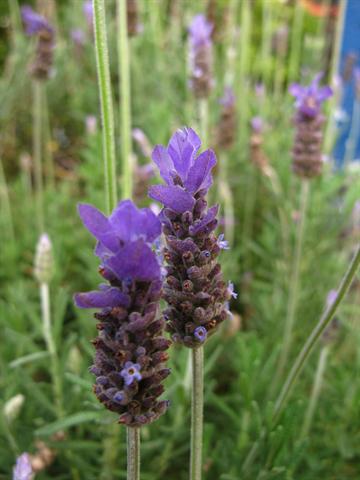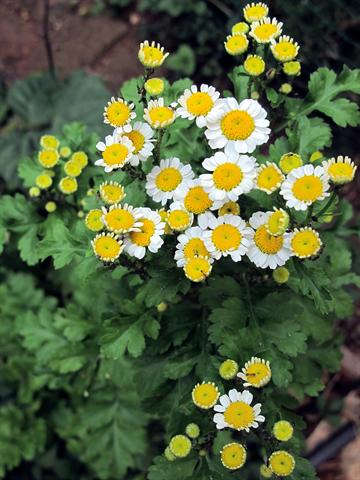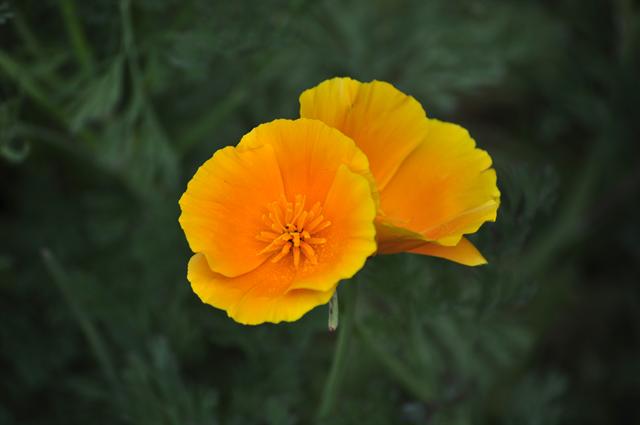These flowering herbs make a gorgeous addition to flower beds. As a bonus, they’re low maintenance, drought tolerant and beneficial in the garden
CALENDULA
With its bright, cheerful orange and yellow flowers, calendula is sunshine in a blossom. A compact annual, it grows to about 60cm high and blooms profusely.
Planting pointers: This versatile, spicy herb is easy to grow and flowers from late autumn throughout winter into early summer. It grows well with pansies.
Growing tips: Grow it from seed in full sun to semi-shade in well-drained soil. It likes being planted in big groups. It will self-seed but never becomes a problem plant.
Uses: Known as ‘poor man’s saffron’, the flowers colour food yellow and have a spicy, tangy flavour, similar to saffron. Although calendula has a wide range of medicinal uses, from an astringent to a menstrual regulator, it’s primarily used in creams as an anti-inflammatory and to heal cuts, stings, rashes and fungal conditions.
LAVENDER
Lavender is a popular and ancient herb. With its grey-green spiky leaves and wide range of flowers, it adds interest, colour and fragrance to a flower garden.
Planting pointers: This hardy perennial flowers nearly all year round. It likes full sun and is drought tolerant.
Growing tips: Grow lavender from seed in seed trays or purchase young plants. It dislikes being damp and if its roots are constantly wet it could die. Plant it in well-drained soil with plenty of space for air circulation. Prune in early spring, cutting back about 8cm of the growth.
Uses: Lavender flowers and leaves are delicious in baked goods, jams, jellies and cordials – it’s strongly flavoured so use it sparingly. The flowers are used medicinally in infusions, creams and oils to calm and soothe.
FEVERFEW
With attractive daisy-like white flowers and insect-repelling properties, feverfew is both pretty and useful.
A perennial, it grows to 60cm high and flowers from spring through to early autumn.
Planting pointers: Feverfew grows easily from seed and will self-seed in the places it likes best. It prefers well-drained soil in full sun. It works well in informal gardens and its clusters of white flowers balance the stronger colours of flowers such as pink phlox and chrysanthemums.
Growing tips: In very hot weather, keep it well watered. It dies back over winter in colder areas but springs up in warmer weather.
Uses: This extremely bitter herb is more often used medicinally. As its name suggests, one of its uses is to reduce fevers, although it is more commonly used in infusions to treat migraines and headaches associated with menstruation.
YARROW
With its feathery leaves and clusters of flowers ranging from white and pale pink to deep crimson, yarrow adds delicate splashes of colour to the garden.
Planting pointers: An upright perennial, it grows to about 60cm high and flowers from late spring through to early autumn. Yarrow accumulates nutrients and recycles them, improving soil quality and benefiting all nearby plants. It combines well with grey plants such as Dusty Miller.
Growing tips: A hardy plant, it likes full sun. Other than needing plenty of moisture while becoming established, it can survive dry spells. It is easier to propagate by division or seedlings than from seed.
Uses: The young flowers and buds can be added to salads and stir-fries. The flowers contain powerful anti-allergenics making them a useful treatment in infusions for bronchial problems, hay fever and asthma.
CALIFORNIA POPPY
Ranging from golden orange to pale cream, the versatile California poppy adds glowing sunny colour to an informal cottage garden.
Planting pointers: This hardy plant flowers from spring to early summer and again in autumn and winter. Sow in situ in spring or autumn in full sun.
It grows well with geraniums and scented pelargoniums.
Growing tips: It is an easy-to-grow, drought-tolerant perennial that grows to about 60cm high in all types of soil. It will self-seed without becoming invasive.
Uses: The edible petals can be added to salads. The whole plant has sedative qualities. Use it in infusions to treat nervous conditions, especially insomnia. It is also a pain reliever, particularly for toothache.
